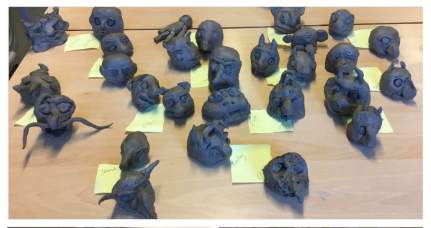Before the lesson
Learning objective
- To create a sculpture
National curriculum
Pupils should be taught to:
- Develop their techniques, including their control and their use of materials, with creativity, experimentation and an increasing awareness of different kinds of art, craft and design
- Improve their mastery of Art and design techniques, including drawing, painting and sculpture with a range of materials [for example, pencil, charcoal, paint, clay]
- About great artists, architects and designers in history
Success criteria
Cross-curricular links
Attention grabber
Main event
Differentiation
Pupils needing extra support: May need reassurance that their head doesn’t need to look ‘realistic;. Remind them that the expression on the head is what is being focused on. Shrigley’s hand is out of proportion, but expresses an idea.
Pupils working at greater depth: The Fourth Plinth sculpture is an opportunity for the artist to make a statement. More able children should explain the statement that they are making with their artwork.

